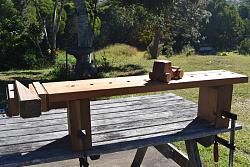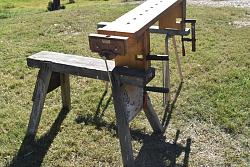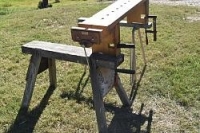
Originally Posted by
Beserkleyboy

Ranald, a cracker, that is! Great re-purposing as usual...and a note for friends in the US. Douglas fir was called Oregon Pine before it was classed as a a separate species, around 1920, I think...The name stuck in Australia, traditionally a very big importer of West Coast softwood, predominately DF and WRC. The Douglas Fir name never took hold and it is still called just 'Oregon'...many, dare I say most people, have no idea at all of the origin of the name, the species or even that it was originally named after the state where it grew (as well as CA, Wash, and BC..) and was cut , sold and used. My grandad was the GM of a very large lumber and component remanufacturing plant, Redwood Manufacturing, in Pittsburg, CA, in the late 20s, just before the depression. They also processed mearly as much 'Oregon Pine', as it was the preferred species for doors and windows. Mind you, it bore no resemblance to the 2nd and 3rd growth rubbish you see now...more like 20-25 rings per inch, and much of the sawn lumber was clear all heart verticle grain...and I've got a small cache of DF, WRC and Redwood in my racks that I drag out for heirloom projects. A real joy to use, both physically and knowing its history and that I've been carting it round the world for 35 years...I have his pocket price book (a gem of a read, with pics and drawings) from 1928 with prices as well. The logs and large cants were shipped from coastal Oregon and Calif sawmills down the coast, through the Golden Gate, and up the Sacramento river to the site. They reprocessed the wood into doors, windows, screens, letterboxes, water tanks, wine vats and cooling towers and a lot more. All the goods were then shipped to hardware stores and lumber yards in the Northern California area, with the majority to the SF Bay Area on regular weekly runs. Some trains, mostly early flat bed trucks. Need a dozen Redwood lamposts, style 43a by next week? No problem...cheers
Jim, waiting for a cool change, South Coast NSW


 LinkBack URL
LinkBack URL About LinkBacks
About LinkBacks




 Reply With Quote
Reply With Quote




Bookmarks